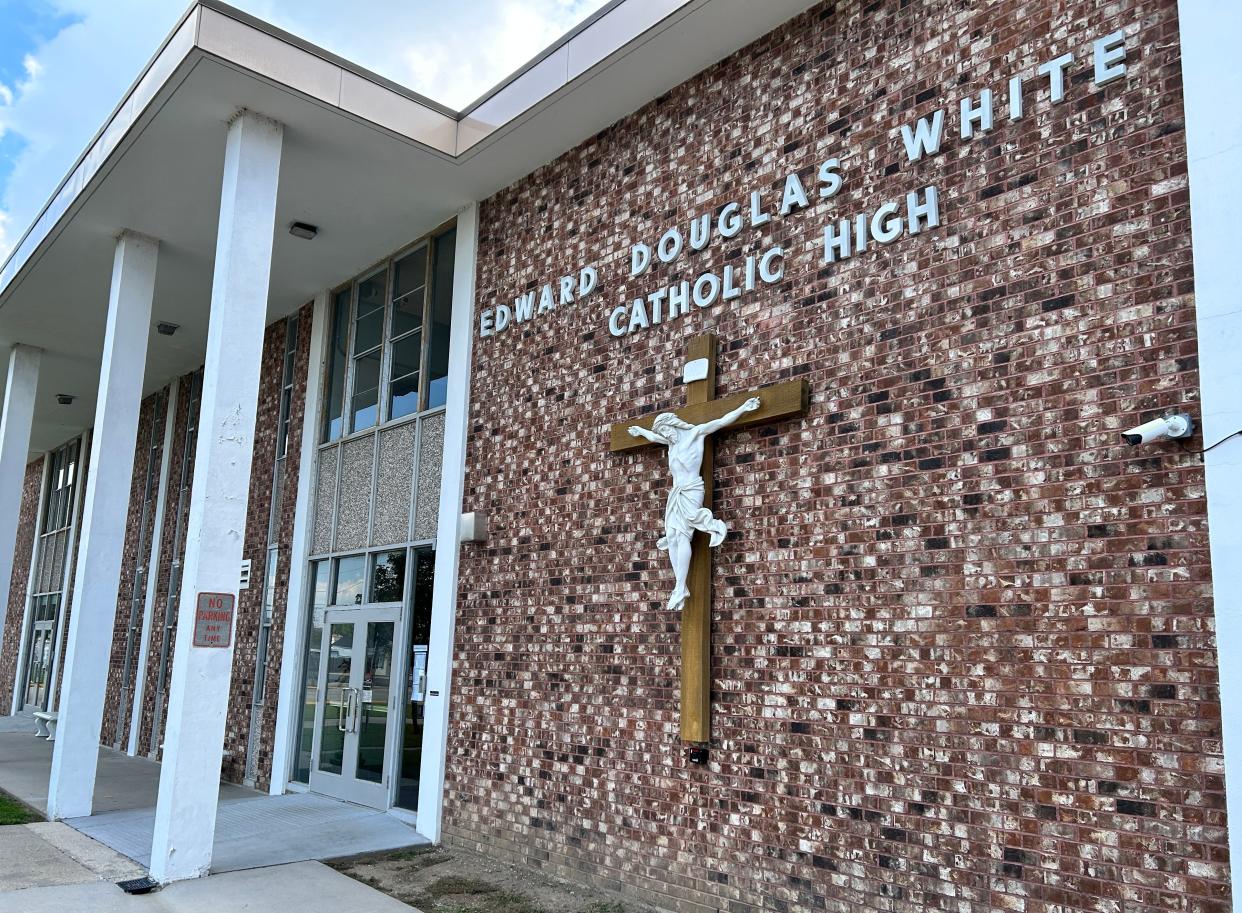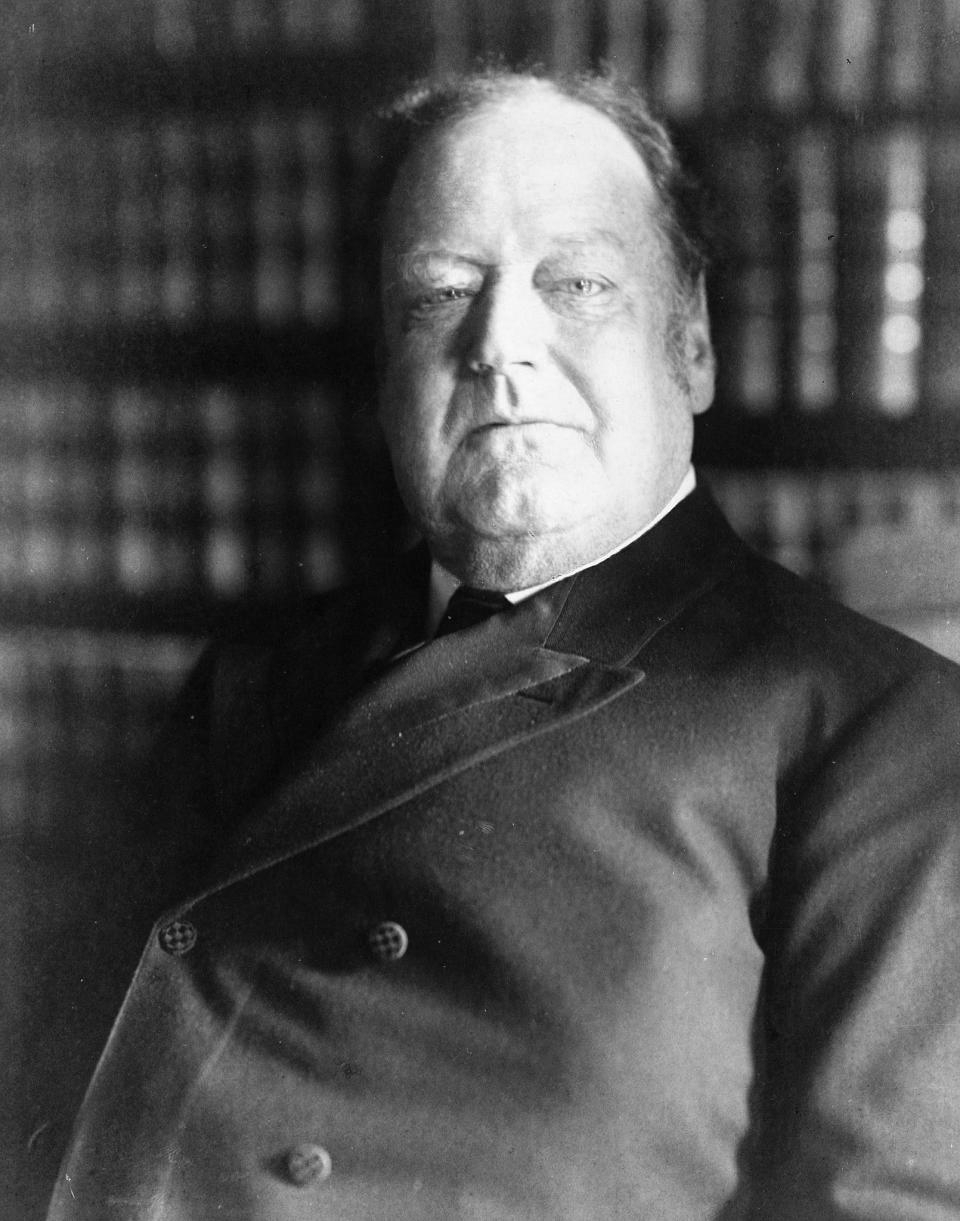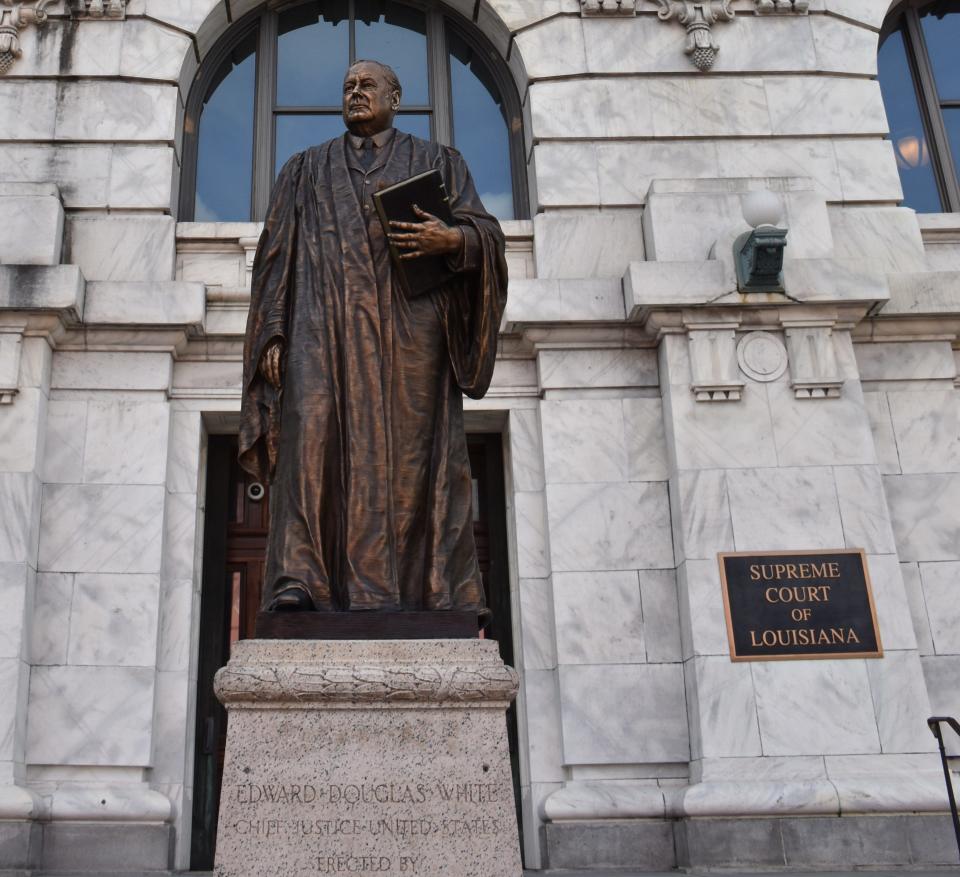E.D. White was a Confederate soldier and white supremacist. Is a change of heart enough?

E.D. White High’s website says the Thibodaux school’s roots “extend deep into the soil of Bayou Lafourche.”
As the outgrowth of a school for Catholic education was founded in 1855, there can be little doubt as to that statement’s truth, perhaps in more ways than its administrators might prefer.
The family of the school’s namesake, U.S. Supreme Court Chief Justice Edward Douglass White Jr., sank roots deep into land alongside Bayou Lafourche as well. The jurist’s father was governor of Louisiana from 1835 to 1839. The family’s home, now a popular tourist attraction, is a state-run historic site situated amid what had been their expanse of sugar-cane fields, tended by enslaved workers until Emancipation.
The school that bears his name was originally called Thibodaux Central Catholic High, according to a letter from the former bishop of the Houma-Thibodaux Diocese, written in 2021 in response to questions about its current name.
In 1966 — prior to the creation of the Houma-Thibodaux Diocese — then-New Orleans Archbishop Philip Hannan changed the school’s name to honor the former Supreme Court chief justice, a Roman Catholic native of Lafourche Parish.
“When Hannan was a young altar server, he was inspired by White’s regular presence at Mass in Washington, D.C.,” Houma-Thibodaux Bishop Shelton Fabre wrote in 2021.
Little, if any, evidence indicates the younger White, in his teens when the Civil War started, had much to do with his family’s role as slave keepers. He did join the Confederate Army in his teens, but records are scant and historical interpretations are conflicted. Documents show White served in an irregular Louisiana group that was essentially a guerilla unit. Documentation also indicates that for some period he was taken prisoner by Union Army forces.
Andrew Kent, a Fordham University history professor whose research has largely focused on White, refers to the young soldier’s military record as “undistinguished.”
Both sides of the law

But it’s not solely White’s Confederate military service that has caused debate about him.
Rather, he is particularly remembered for his time on the U.S. Supreme Court, from 1894 to 1921, with the final 11 years as chief justice.
Two years into White’s tenure, the Plessy v. Ferguson case was decided, a landmark ruling that would affect civil rights for Black Americans for the next 50 years or more. Plessy upheld the nation’s “separate but equal” doctrine as the law of the land and reinforced racial segregation across the South..
Yet White poses somewhat of an enigma for historians.
“White did not have enlightened racial views and joined the majority of the court in Plessy v. Ferguson and other decisions that denied equal rights to African-Americans,” Kent stated. “But he also wrote the court’s decisions holding unconstitutional the so-called ‘grandfather clauses’ that were used in the South after the war to prevent African Americans from voting, and voted in favor of civil rights in other important cases.”
Grandfather clauses mandated that an individual could not vote unless his grandfather had. This meant that for people whose ancestors were slaves, voting would be an impossibility.
The bishop's reasoning
Bishop Shelton Fabre: Letter on E.D. White High School name by The Courier and Daily Comet on Scribd
The Diocese of Houma-Thibodaux, which owns and operates the 700-plus-student school, has been asked repeatedly over the years whether the school’s name should be changed.
Its official response remains in a 2021 letter penned by Fabre, who was named Louisville, Kentucky, archbishop last March after nearly nine years as Houma-Thibodaux’s first Black bishop. Fabre also served as the first chairman of the U.S. Conference of Catholic Bishops’ Ad Hoc Committee on Racism, a role he held from 2018 until stepping down in May 2023.
In his letter, Fabre acknowledges that the White family had owned slaves and E.D. White’s Confederate involvement. The letter also states, affirmatively, something that is still a sticking point among historians — White’s alleged membership in the White League, a Louisiana paramilitary organization similar to the Ku Klux Klan responsible for terrorist crimes against Black people and Republicans during Reconstruction. It further references White’s role in the Plessy decision.
But Fabre also noted cases White took part in, referenced by Kent, that indicate a more conscientious attitude than that reflected in the landmark decision.
In 1911, White sided with the majority in Bailey v. Alabama, which eliminated forced labor to repay debt. In the ruling, the court said Alabama law undercut the 13th Amendment, which abolished slavery.
Fabre also cited Guinn v. United States, the grandfather clause case, for which White wrote the majority opinion. White also voted with the majority in 1917, declaring unconstitutional a Kentucky law that barred Black people from buying or renting homes in predominantly white neighborhoods.
Debate extends beyond school
Despite those later decisions that today would be judged on the “right” side of history, Kent said he understands, through his research, what sparks controversy around statues of White in New Orleans and the U.S. Capitol building as well as questions about the Thibodaux school.
Earlier: E.D. White: Confederate monument debate hits home
It is no secret, Kent said, that many of White’s racial views were “abhorrent.” In particular, he noted White’s involvement in the onerous White League, as a participant in the 1874 Battle of Liberty Place in New Orleans.
Allegations of membership in the Knights of the White Camelia, a Reconstruction-era hate group, are mentioned by historians but Kent, and other historians note that secret societies don’t tend to make their membership rolls public. Allegations of Ku Klux Klan membership are questioned, not only due to lack of proof but because of the hate group’s disdain for Catholics.
White’s involvement with the Crescent City White League, however, is documented. He took part in the Battle of Liberty Place in 1874, which occurred at the foot of Canal Street in New Orleans. The battle was an attempted coup by white-supremacist Democrats against Louisiana’s Republican government, a product of Reconstruction.
That, along with the Plessy decision, were among the reasons cited by activists for years that a bronze statue of the jurist should not grace the entry of the Louisiana Supreme Court building in New Orleans, and in 2020 it was removed. The statue is set to be displayed inside the building near the court’s museum but is not yet viewable by the public.
'A transformation of his beliefs'

A bill that would mandate removal of all statues of Confederates from the halls of the U.S. Capitol — including one of White — was referred to a Senate committee in February, where it languishes. The measure had passed the House of Representatives.
“White did carry arms into what amounted to a white man’s coup against Republican governments,” Kent said. “We don’t have access to his inner thoughts. These were attempted overthrows of the Republican governments when Black people were being elected to state offices, White twice carried a weapon and participated in that.”
Bishop Fabre’s letter says he thoroughly explored all aspects of White’s life and career. He stated that Archbishop Hannan’s decision to name the school after White was “because of White’s strong Catholic faith and for no other reason.”
While the judge’s actions in his earlier life “demonstrate racism,” Fabre wrote that “actions in White’s later life demonstrate a transformation of his beliefs.“
Such a transformation, the bishop wrote, is consistent with recent church teachings that racism must be addressed by a change of heart among individuals.
Since White’s later court decisions and other factors indicate such a change, Fabre wrote, “with inspiration from this teaching of the church, the name of the school will remain E.D. White Catholic High School.”
Next in the series: Andrew Price School in Schriever. John Kelly DeSantis is a freelance journalist and former reporter for the Houma Courier and Thibodaux Daily Comet.
This article originally appeared on The Courier: Edward Douglass White: Is a change of heart enough?

